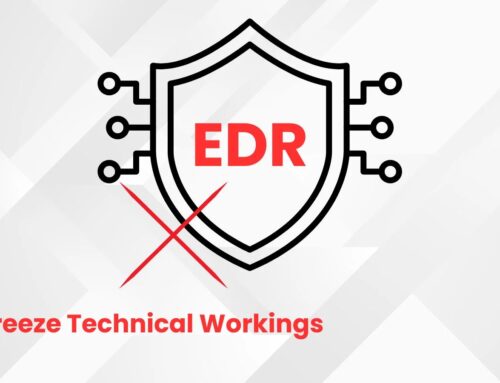
Critical WordPress Plugin Vulnerability Exposes 70,000+ Sites to RCE Attacks
A severe security vulnerability has been identified that places countless WordPress websites at significant risk. Specifically, a critical flaw in the widely used “Database for Contact Form 7, WPforms, Elementor forms” plugin could enable attackers to execute arbitrary code remotely, compromising sensitive data and entire systems. This discovery underscores the constant vigilance required in managing web infrastructure.
The Critical Vulnerability Unpacked: CVE-2025-7384
The vulnerability, officially tracked as CVE-2025-7384, carries a maximum CVSS score of 9.8. Such a high score indicates extreme severity, suggesting that the vulnerability is easily exploitable and could lead to significant impact, including complete system compromise without requiring user interaction or complex conditions. This flaw affects all versions of the “Database for Contact Form 7, WPforms, Elementor forms” plugin up to and including 1.4.3. Given its popularity, this vulnerability potentially exposes over 70,000 WordPress sites to immediate danger.
The core of this issue lies in how the plugin processes data, likely leading to unchecked input that can be manipulated by an attacker to inject malicious code. When successfully exploited, remote code execution (RCE) grants an attacker the ability to run commands on the affected server as if they were a legitimate user, potentially leading to website defacement, data theft, or the installation of backdoors for persistent access.
Understanding Remote Code Execution (RCE)
Remote Code Execution (RCE) is one of the most dangerous types of vulnerabilities. It allows an attacker to execute arbitrary malicious code on a target system from a remote location. In the context of a WordPress site, an RCE vulnerability means an attacker could:
- Take complete control of the website.
- Access and steal sensitive user data, including personal information and credentials.
- Install malware or ransomware on the server.
- Use the compromised server as a launching pad for further attacks.
- Deface the website or inject malicious content.
The implications for sites processing sensitive customer data via contact forms or Elementor integrations are particularly severe, as direct access to backend systems becomes a tangible threat.
Affected Plugin: “Database for Contact Form 7, WPforms, Elementor forms”
This critical vulnerability impacts the “Database for Contact Form 7, WPforms, Elementor forms” plugin, which is widely used to store form submissions directly into the WordPress database. Its utility makes it a common choice for website administrators who need to manage form data efficiently. However, its widespread adoption also means that a vulnerability of this magnitude could have a cascading effect across a large segment of the WordPress ecosystem.
Users who have installed this plugin for any of the mentioned form builders—Contact Form 7, WPForms, or Elementor forms—must take immediate action to mitigate the risk.
Remediation Actions: Protect Your WordPress Site
Immediate action is crucial to protect your WordPress site from CVE-2025-7384. Follow these steps:
- Update Immediately: The most critical step is to update the “Database for Contact Form 7, WPforms, Elementor forms” plugin to the latest patched version. Always apply updates from trusted sources only.
- Backup Your Site: Before performing any updates, create a complete backup of your WordPress website, including files and database. This ensures you can restore your site if any issues arise during the update process.
- Monitor for Suspicious Activity: After updating, closely monitor your website for any unusual activity, such as unexplained file changes, new user accounts, or performance degradation.
- Implement Web Application Firewall (WAF): A WAF can provide an additional layer of defense by filtering malicious traffic before it reaches your WordPress application. Configure it to block common attack vectors.
- Review User Permissions: Regularly review user roles and permissions on your WordPress site, adhering to the principle of least privilege.
Essential Security Tools for WordPress
Leveraging the right security tools is vital for maintaining a robust defense posture against vulnerabilities like CVE-2025-7384. Here’s a table of useful tools:
| Tool Name | Purpose | Link |
|---|---|---|
| Wordfence Security | Comprehensive WordPress security, including firewall, malware scanner, and login security. | https://www.wordfence.com/ |
| Sucuri Security | Website security platform offering malware scanning, removal, and WAF protection. | https://sucuri.net/ |
| WPScan | Black box WordPress security scanner to find vulnerabilities. | https://wpscan.com/ |
| iThemes Security Pro | WordPress security plugin for site hardening, brute force protection, and file change detection. | https://ithemes.com/security/ |
| Cloudflare | Provides WAF, DDoS protection, and performance optimization for websites. | https://www.cloudflare.com/ |
The Broader Implications for Web Security
This incident serves as a stark reminder of the ongoing challenges in securing web applications, particularly those built on platforms like WordPress that rely heavily on third-party plugins. Each additional plugin introduces a new potential attack surface. Proactive security practices, including regular updates, vigilant monitoring, and the strategic use of security tools, are indispensable:
- Supply Chain Security: Be mindful of the security posture of the plugins and themes you integrate into your site.
- Regular Audits: Conduct periodic security audits of your WordPress installation and its components.
- Principle of Least Privilege: Ensure all users and components operate with only the necessary permissions.
Maintaining awareness of newly disclosed vulnerabilities and acting swiftly to implement patches is paramount. The difference between a secure site and a compromised one often lies in the speed and effectiveness of response to critical security advisories.





